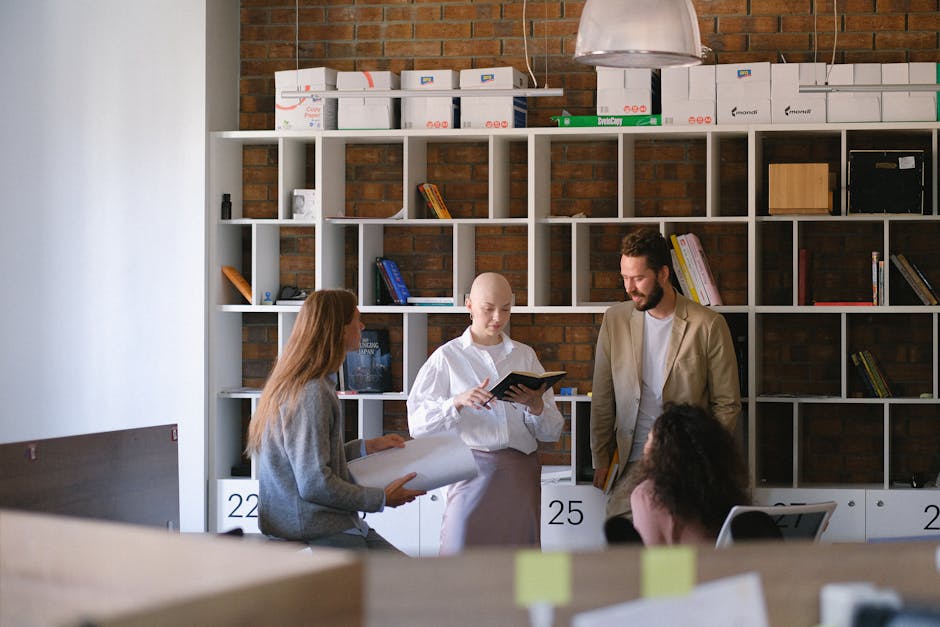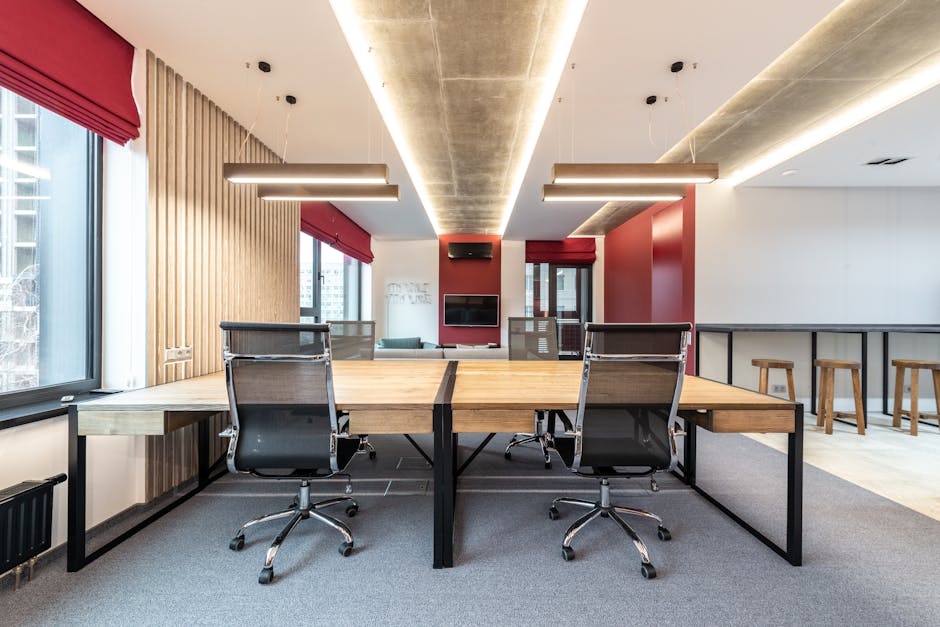The Art of Office Fit: Creating Spaces That Inspire and Perform
“Explore the intricacies of office fit and learn how to design a workspace that not only meets functional needs but also inspires creativity and collaboration. This article delves into the key elements of successful office design, from ergonomics to technology integration, and how they contribute to a thriving work environment. ”

The Art of Office Fit: Creating Spaces That Inspire and Perform
In today's dynamic business landscape, the concept of office fit has evolved far beyond mere furniture arrangement and color schemes. It's about crafting an environment that not only accommodates your workforce but also enhances their productivity, fosters creativity, and aligns with your company's core values. Let's explore how you can master the art of office fit to create a workspace that truly works for your organization.

Understanding the Essence of Office Fit
Office fit, at its core, is the process of designing and optimizing your workplace to meet the specific needs of your business and employees. It's a delicate balance between functionality, aesthetics, and culture. A well-executed office fit can significantly impact employee satisfaction, productivity, and even your company's bottom line.
The Impact of Physical Environment on Work
Research has consistently shown that our physical environment plays a crucial role in how we work. Factors such as lighting, noise levels, temperature, and spatial layout can all affect cognitive function, mood, and overall well-being. By carefully considering these elements in your office fit strategy, you can create a space that supports your team's best work.
Key Elements of a Successful Office Fit
1. Flexibility and Adaptability
In our rapidly changing work landscape, flexibility is key. Design your office with adaptability in mind, incorporating movable furniture and modular spaces that can be easily reconfigured to accommodate different work styles and team sizes.
2. Ergonomics and Comfort
Prioritize ergonomics in your office fit to support employee health and well-being. Invest in adjustable desks, supportive chairs, and proper lighting to reduce physical strain and increase comfort.
3. Technology Integration
Seamless technology integration is crucial for modern workplaces. Ensure your office fit includes ample power outlets, robust Wi-Fi coverage, and spaces designed for video conferencing to support hybrid work models.

4. Collaborative Spaces
Foster teamwork and innovation by incorporating a variety of collaborative spaces. From informal breakout areas to dedicated project rooms, provide options that cater to different types of group work.
5. Quiet Zones
Balance collaborative areas with quiet zones where employees can focus on individual tasks without distractions. This is especially important in open-plan offices to support concentration and deep work.
Designing for Company Culture
Your office fit should be a physical manifestation of your company culture. Consider how your workspace can reflect your values and brand identity. For example, a creative agency might opt for bold colors and unconventional furniture, while a law firm might choose a more traditional, sophisticated design.
Incorporating Brand Elements
Use your office fit as an opportunity to reinforce your brand. Incorporate your company colors, logo, and other visual elements throughout the space to create a cohesive brand experience for employees and visitors alike.
The Role of Biophilic Design
Biophilic design, which incorporates natural elements into the built environment, has gained significant traction in office fit strategies. By bringing nature indoors through plants, natural light, and organic materials, you can create a more calming and inspiring workspace.

Benefits of Biophilic Design:
- Reduced stress levels
- Improved air quality
- Enhanced creativity and productivity
- Increased sense of well-being
Promoting Wellness in the Workplace
A well-designed office fit can play a crucial role in promoting wellness at work. Consider incorporating features such as:
- Standing desks and treadmill workstations
- Dedicated spaces for relaxation or meditation
- On-site fitness facilities or yoga rooms
- Healthy snack options in break areas
The Future of Office Fit
As we look to the future, office fit will continue to evolve, driven by changing work patterns, technological advancements, and a growing focus on sustainability. Building workplace community will become increasingly important, especially as hybrid work models become more prevalent.
Embracing Smart Office Technology
Incorporate smart office technology into your fit-out to enhance efficiency and user experience. This might include:
- Occupancy sensors for space optimization
- Smart lighting and climate control systems
- Visitor management systems for improved security and guest experience
Conclusion: Crafting Your Ideal Office Fit
Creating the perfect office fit is an ongoing process that requires careful planning, employee input, and a willingness to adapt. By focusing on flexibility, employee well-being, and alignment with your company culture, you can create a workspace that not only meets your current needs but also positions your organization for future success.
Remember, the best office fits are those that evolve with your company, supporting your team's changing needs and fostering a sense of belonging and purpose. Invest the time and resources to get it right, and you'll reap the rewards of a more engaged, productive, and satisfied workforce.